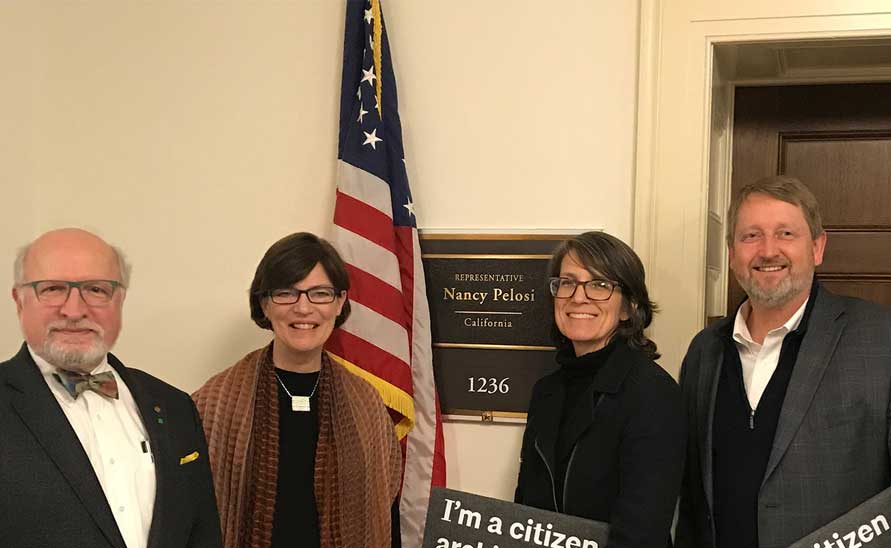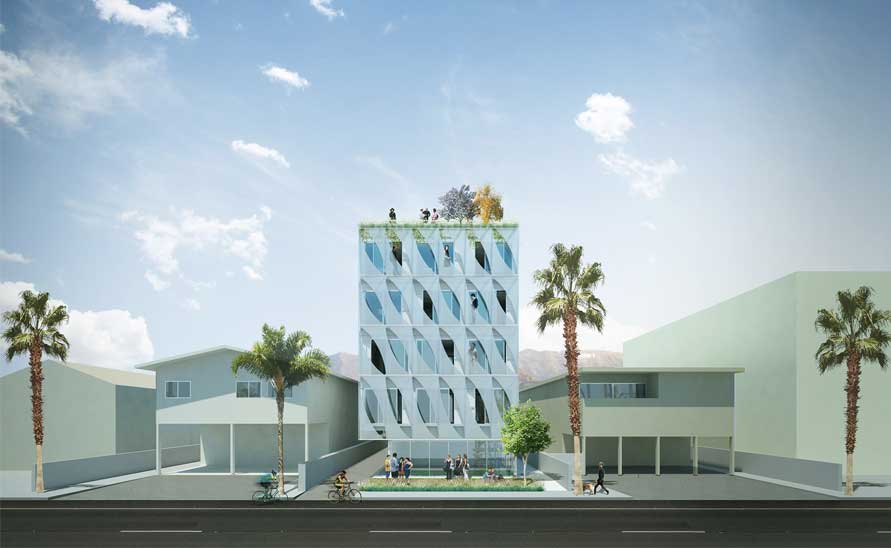The front door to Brooks + Scarpa doesn’t close, it pivots. That’s an apt metaphor for the work and life of Angie Brooks, FAIA, who was recently named the 2020 AIALA Citizen Architect by the AIA Los Angeles Board of Directors. Brooks has brought to fruition innovative, award-winning buildings that change how municipalities handle sustainability construction and housing production.
But for Brooks, the advancement of these core values does not end in the architecture. Thus, she frequently travels beyond her office to advance policy. Brooks visited Washington DC to advocate for policies that support sustainable building. She developed a framework to assist mayors across the country interested in attaining Paris Accord benchmarks after the US withdrew from the agreement. She amplifies her long-held belief that housing is a basic human right at public meetings, through AIA programs, and on @brooks_scarpa, the firm’s Instagram feed. She points out design is more than a building, it goes beyond the property line.
To attain goals related to housing, Brooks co-founded an affordable housing non-profit about twenty years ago. She began her recent interview with us there before explaining to us why there should be no “dream projects.”


1. Out of your projects, can you select one which you believe has most contributed to the city, how, and… why did you do it?
Fuller Lofts, because we knew the site was perfect for mixed-use housing yet in an industrial area where it was illegal to build it. We spent one year obtaining twenty-five variances for items such as: reduced parking near transit, residential uses, and to save the building by not enlarging the street, as well as to combine affordable and market rate housing because they were symbiotic.
The project spurred revitalization of Lincoln Heights, and was a model for code changes. Plus, it was done through a non-profit I co-founded, whose purpose was: to improve public policy in the city and develop demonstration projects.
2. What’s the best depiction of LA architecture in a movie, Netflix project, video or book and why (if you’re so inclined)?
Blade Runner, the director’s cut of the 1982 film—set in a dystopian 2019 LA—because it was filmed in the beautiful innovative landmark Bradbury Building before the renovation. The exterior is simple but the interior knocks your socks off. (The renovation was a significant revitalizer of downtown, btw.)
3. What’s the best thing a client or community member can say to you.
“You are an inspiration and have paved the way for us.”
4. What’s your favorite public place to safe distance in LA right now?
The beach.
5. What’s on your bucket list design-wise. What’s that dream project.
There should be no ‘dream projects’…..there should only be dreams…..and my dream is a community where people do not need to live on the streets.
Rendering: Nest Tool Kit designed by Brooks + Scarpa
Read the press release announcing the 2020 AIALA Presidential Honoree Recipients.







